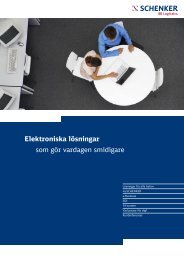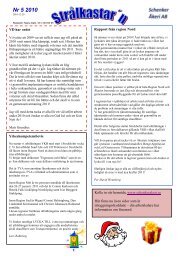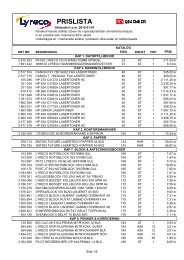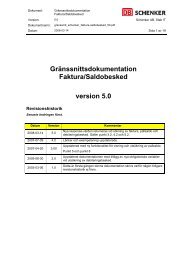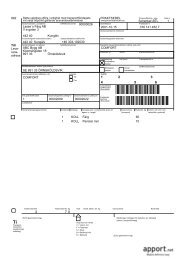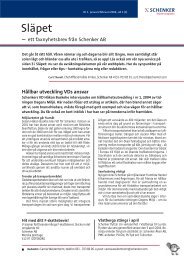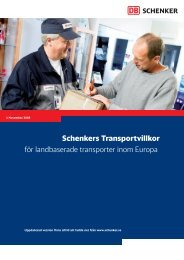Ecological Transport Information Tool for Worldwide ... - Schenker
Ecological Transport Information Tool for Worldwide ... - Schenker
Ecological Transport Information Tool for Worldwide ... - Schenker
You also want an ePaper? Increase the reach of your titles
YUMPU automatically turns print PDFs into web optimized ePapers that Google loves.
Page 42<br />
IFEU Heidelberg, Öko-Institut, IVE, RMCON<br />
• The function of EX-TREMIS stays very close to the Railion vaules in a range from<br />
600 to 1800 gross tonnes.<br />
• Some values from UIC statistics are higher than the Railion values, but the majority<br />
are in line with it.<br />
Figure 10 Energy consumption of electric trains – data sources<br />
Energy consumption of electric trains – data sources (Wh/Gtkm)<br />
65<br />
60<br />
55<br />
50<br />
45<br />
Hilly 2003<br />
Railion 2007<br />
EX-TREMIS 2008<br />
UIC Railway Data 2007<br />
40<br />
35<br />
30<br />
25<br />
20<br />
15<br />
10<br />
5<br />
0<br />
200 400 600 800 1000 1200 1400 1600 1800 2000 2200 2400<br />
Source:Railion, UIC, IFEU<br />
A new function is generated <strong>for</strong> EcoTransIT World which includes the following assumptions:<br />
• Train weight between 600 and 1800 gross tonnes the Railion values correlate well<br />
with the function of EX-TREMIS and most of the UIC-values. There<strong>for</strong>e the following<br />
function correlated to these values is figured:<br />
EC spec [Wh/Gtkm] = 1200 * GTW -0,62<br />
(<br />
ECspec: specific Energy Consumption, GTW: Gross Tonne Weight)<br />
• Below 600 gross tonnes the diffusion of the values is higher. This means a higher<br />
uncertainty of the values. We propose to use the same function as <strong>for</strong> the middle<br />
weight trains due to define the function as simple as possible.<br />
• Above 1500 gross tonnes the Railion values show no significant reduction of specific<br />
energy consumption with growing train weight. This general trend is confirmed by<br />
values of heavy trains (4000 gross tonnes and more) <strong>for</strong> Canada, China, and USA.<br />
There<strong>for</strong>e we propose to use the function until 2200 gross tonnes (specific energy<br />
value: 10 Wh/Gtkm) and then keep it constant <strong>for</strong> larger trains.<br />
EcoTransIT World: Methodology and Data – July 15 th , 2010



